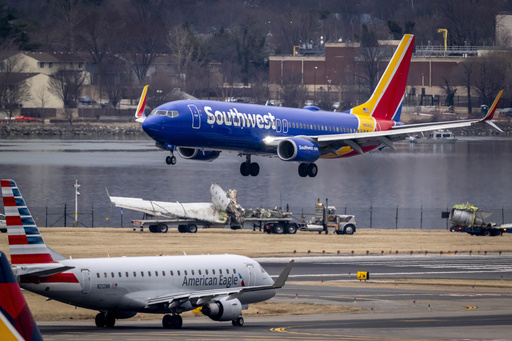
WASHINGTON – A recent poll indicates a slight decline in Americans’ trust regarding air travel safety and the federal agencies responsible for that safety, coming after a tragic accident in Washington. Nevertheless, a majority of respondents still perceive flying as a safe mode of transportation.
According to a survey conducted by The Associated Press-NORC Center for Public Affairs Research, 64% of adults surveyed believe that flying is “very safe” or “somewhat safe,” which represents a small decrease from last year’s figure of 71%. A growing number, approximately 20% of U.S. adults, now view air travel as either very or somewhat unsafe, an increase from 12% recorded in 2024.
Confidence in government agencies responsible for air travel safety has also waned. Just over half of respondents express “a great deal” or “a moderate amount” of trust in these agencies, a decline from around 60% the previous year.
The timing of the poll, carried out from February 6 to February 10, closely followed the January 30 incident where an American Airlines jet collided with an Army helicopter, resulting in the deaths of all 67 passengers and crew on board. This tragic event marked the deadliest aviation disaster in the U.S. since 2001. The poll was conducted before a subsequent accident in Toronto involving a Delta jet that overturned during landing. The relatively small drop in confidence might indicate that the recent accidents have unsettled some members of the public. Last year’s survey also followed another safety-related incident, in which a panel detached from an Alaska Airlines plane mid-flight, leaving a significant breach in the aircraft.
When assessing modes of transportation, many Americans seem to consider flying just as safe as walking or driving. Approximately two-thirds of adults view walking or driving as secure, while only around half express confidence in the safety of local subway, metro, or light rail systems—a sentiment consistent with the previous year’s findings.
In the wake of the Washington incident, former President Donald Trump attributed the accident to federal initiatives promoting diversity and inclusion, though he reassured the public about the safety of flying. This perception shift may explain the noticeable drop in trust among Democrats and independents, while Republicans’ views on flying have remained stable.
Trust in air travel has noticeably declined among independents, with only about 40% now viewing flights as safe, a drop from around 60% the previous year. Similarly, around 70% of Democrats view air travel positively, a decrease from about 75% in 2024. Republicans have maintained their previous perspectives regarding air travel safety.
Both Democrats and independents have also exhibited decreased trust in government agencies that regulate aviation safety compared to four years ago. While the poll was conducted before the removal of probationary Federal Aviation Administration employees, some of the changes in confidence levels are likely tied to the transition in presidential administrations from Joe Biden to Trump.
In January 2024, under Biden’s presidency, approximately 70% of Democrats showed high confidence in federal air safety agencies. Now, that number has dropped to about 60%. Confidence among independents has also decreased, while Republicans’ viewpoints have remained unchanged.
Despite these fluctuations in overall confidence, the survey did not indicate any variations regarding trust in pilots or commercial airlines. About 80% of U.S. adults continue to maintain a high level of faith in pilots, while roughly 75% express similar sentiments towards commercial airlines.
The poll, comprising responses from 1,112 adults, was conducted between February 6 and February 10, utilizing a sample from NORC’s probability-based AmeriSpeak Panel, designed to accurately reflect the U.S. population. The margin of error for the overall adult sample is plus or minus 4.1 percentage points.

